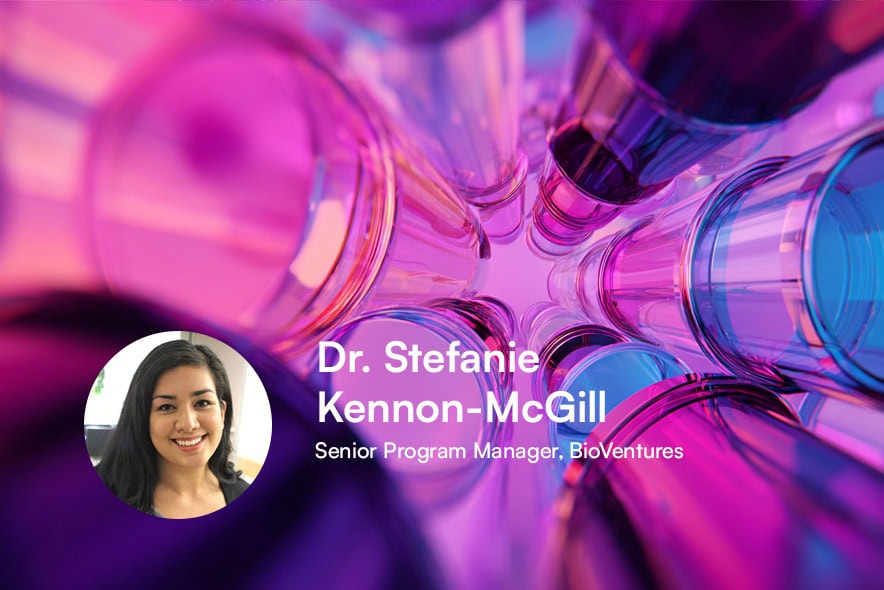How one organization transformed inventor engagement with a full-time outreach role
July 17, 2025 | 5 min readIP rights don’t arise on their own — they begin with people. If inventors don’t disclose their ideas, inventions can’t be protected, and licensing opportunities can’t be activated. But what happens when those ideas never make it into the institution’s innovation pipeline?
The University of Arkansas for Medical Sciences (UAMS) has taken a novel approach to inventor outreach. At the UAMS tech transfer office (TTO), BioVentures, leadership realized that relying on inventors to come to them wasn’t working. Faculty inventors often didn’t recognize protectable inventions, and even when they did, they were unfamiliar with BioVentures or hesitant to pursue commercialization. Promising innovations were stalled at the source, and BioVentures was missing not only revenue potential, but also the broader social impact of its innovations and a meaningful return on its research investment.
So BioVentures made a strategic decision designed to engage: they hired someone full-time to proactively excite, approach, and incentivize inventors. Dr. Stefanie Kennon-McGill, BioVentures’ Senior Program Manager, oversees inventor education, training, and outreach programs. She has turned a visibility and engagement problem into a proactive outreach machine; or in her words, she reaches out “to inventors and potential inventors to get them to understand IP, commercialization, why they should care, why they should work with us, and how.”
Many organizations, both corporate and academic, educate inventors about IP — but few are as strategic about it as BioVentures. “When I go to conferences and tell people [what I do], I get a lot of weird looks because I think it’s unusual in this space,” Dr. Stefanie says. “But I think it’s unusual in a good way — something that other researchers should emulate.”
Strategy Shift: Passive to Proactive
BioVentures’ formation and critical realization: “They don’t know we exist”
Stefanie was hired in 2023 when BioVentures realized it had a brand awareness problem. BioVentures was created as a separate entity from UAMS in 2017 to enable more entrepreneurial flexibility. As a distinct LLC, BioVentures has its own board of directors, financial structure, and the ability to take equity in startups, among other advantages.
A few years in, leadership recognized a huge blind spot: most researchers on campus didn’t know BioVentures even existed. “Even now,” says Stefanie, “it’s not infrequently that I’ll meet researchers who ask, ‘What’s BioVentures?’ Or they’ll know the name, but not know what we do,” Stefanie explains. So instead of relying on chance disclosures, BioVentures created a new role to do the work many offices overlook: educating, encouraging, and empowering inventors.
Building empathy and understanding as a former member of faculty
Stefanie’s own experience as a former UAMS researcher highlights exactly why a dedicated outreach team is essential: “Until I applied to the job, I myself didn’t know what BioVentures was, even after several years [of working at UAMS].”
Before transitioning into tech transfer, Stefanie was on the faculty in the College of Public Health at UAMS, with a research background in neuroscience. Her experience gives her both credibility and empathy: Stefanie can meet faculty where they are, and gently reframe their perspective on tech transfer. “I thought of commercialization as a dirty word. Most people get into biomedical research to make a difference, not to make money.” Now, she helps faculty understand that the most effective and reliable way for their discoveries to have an impact is by partnering with someone who’s motivated to see it succeed: an investor.
BioVentures’ inventor outreach strategies and tactics
A marketing mindset for internal engagement
Marketing in tech transfer usually means marketing technologies to companies, but as Stefanie notes, “if your inventors aren’t disclosing their work, marketing to potential licensees doesn’t matter.” BioVentures uses varied outreach approaches to build attention and increase brand awareness.
Regular communications via LinkedIn, a newsletter, and a podcast
Stefanie’s team accesses media that inventors are already plugged into, by regularly producing LinkedIn posts, a newsletter, and a podcast, all targeting university faculty. BioVentures invests in graphic design to make these and the office’s overall branding visually appealing. The team uses these channels to publicize events and programs, highlight UAMS work in “startup spotlights,” and let the community get to know the team: “We’re a service organization, so it’s important for the people on campus to see us and view us as people who can help,” says Stefanie. Together, these efforts aim to make faculty aware of BioVentures and to keep IP and tech transfer top of mind for their key stakeholders.
Working relationships with campus communications and other channel owners
Stefanie’s team piggybacks off of existing university channels of communication wherever possible, inserting messaging in widely-read faculty communications. To do this, Stefanie arranges meetings with a list of department and division leaders to explain BioVentures’ mission and benefits. “We’ve really tried to foster good relationships so they’ll agree to send out information about us.” The team also maintains a strong relationship with the campus communications department, which helps amplify BioVentures’ message through university-wide articles on BioVentures. This strategic use of channels is especially valuable given that many inventors may not be active on platforms like LinkedIn.
Educational seminars
BioVentures also leads event-driven lecture programming on topics faculty don’t usually encounter. “A lot of our people on campus are used to sitting through hour-long talks, so it’s an easy way for us to get the word out and educate,” Stefanie points out. BioVentures’ monthly seminars have spanned a breadth of subjects, from the basics of different licensing agreements and how to raise startup funds, to business modeling tools like Lean Canvas.
Innovation Week
Last spring, with the goal of increasing campus engagement with innovation and commercialization, BioVentures organized its first Innovation Week. Stefanie was intent on providing people “with programming that we thought they would be interested in, building excitement around innovation, and exposing them to things they might not be thinking about, like industry research partnerships.” An important key to the event’s success? “We fed them.” BioVentures also invited well-known faculty and community members to speak, choosing familiar, respected names to attract interest and boost attendance. The success of this year’s event has set the stage for an even bigger Innovation Week next year.
Programming targeted at students
“Students, trainees, and postdocs — people who are early in their career — have amazing ideas and more time on their hands,” Stefanie notes, making them great entry points for IP. Stefanie has leveraged the student body as a resource through several approaches. One is BioVentures’ Student Innovator Awards. Each year, BioVentures reviews student abstracts and awards ten with the strongest commercialization potential, highlighting them with a special tag on their poster. “The award gets students really excited,” says Stefanie, and further boosts awareness: last year, one of the PIs approached Stefanie to ask about the special tag, opening the door to a conversation about BioVentures. One lesson from the approach is that engaging students early can spark interest among faculty mentors as well, especially earlier stage faculty who may be more open to IP collaboration and can become valuable advocates within their departments.
Stefanie’s Top Reminders for Inventor Outreach Success
Try out a range of approaches and activities
What works at one university or organization doesn’t always work at another, so there’s a necessary period of trial and error. Stefanie reports that a lot of her time the past two years has been spent determining how best to reach people, whether through individual conversations with inventors or large-scale audiences at programs and events.
Engaging inventors is hard — be persistent, consistent, and insistent
“You have to put the same message out over and over again before people see themselves as inventors,” says Stefanie, but not everyone naturally identifies with that label. In fact, one school raised faculty participation simply with a shift in language, replacing the term “inventors” with “problem solvers.”
Only once inventors self-identify do they begin to realize their work could be considered IP with commercial value.“So many scientists are so focused on the one thing that’s right in front of them. That’s their passion. That’s what they do. So it’s really hard to get them to open their eyes and open an email that doesn’t have anything to do with what they normally care about. It’s been a lot harder than I thought it would be,” Stefanie shares.
Conclusion: Inventor outreach isn’t a luxury, it’s a strategic imperative
Many IP teams talk about being proactive, but BioVentures built it into their org chart. Stefanie’s work shows that educating, connecting with, and supporting inventors can’t be an ad-hoc afterthought, it’s foundational. BioVentures’ success in turning researchers from reluctant participants into enthusiastic collaborators suggests this approach could be useful for other organizations. By investing in relationship building long before the disclosure process, BioVentures has proven that proactive engagement works — and my hope is that other institutions will be inspired to follow suit. To achieve better disclosures, stronger IP, and more licensing wins, start by asking, “Who owns inventor engagement in my organization, and do they have the time to do it right?”
To learn more about BioVentures, its outreach, and its grant-funded programs, I highly recommend reading the BioVentures 2024 annual report.



